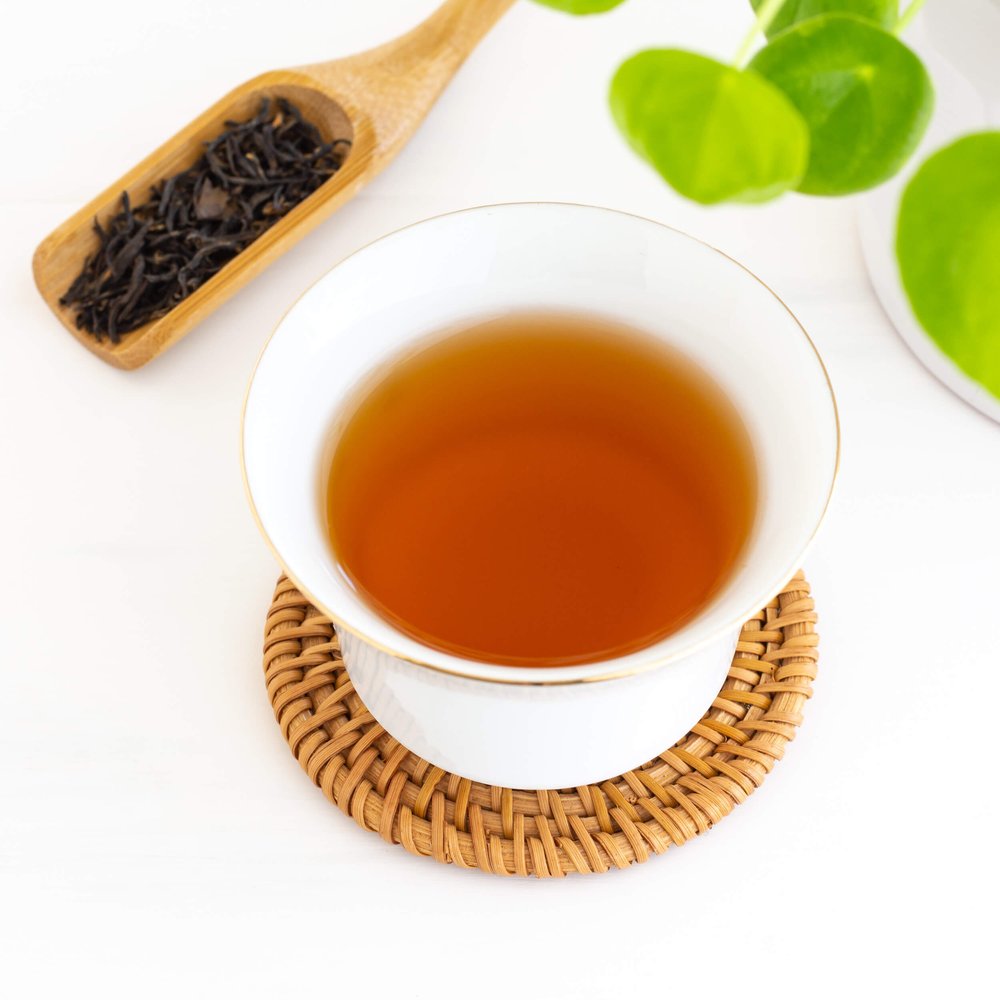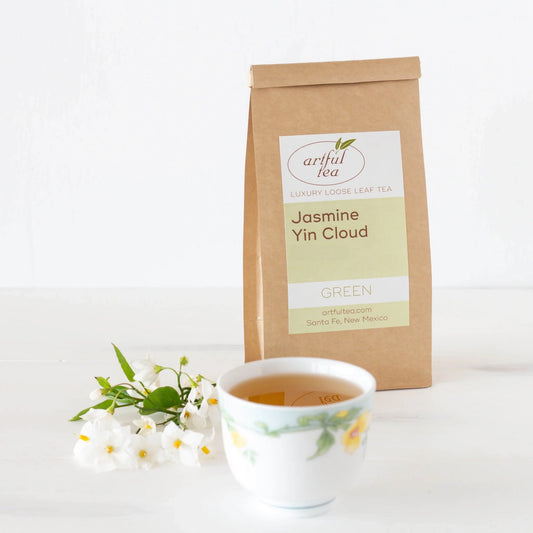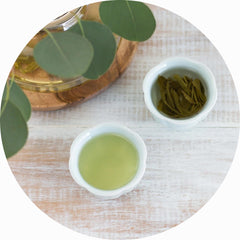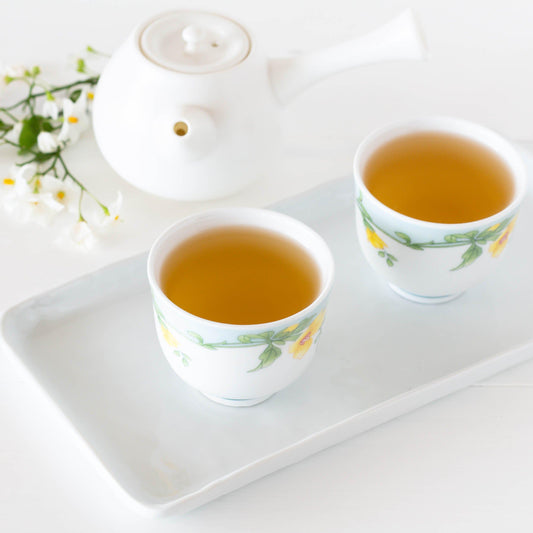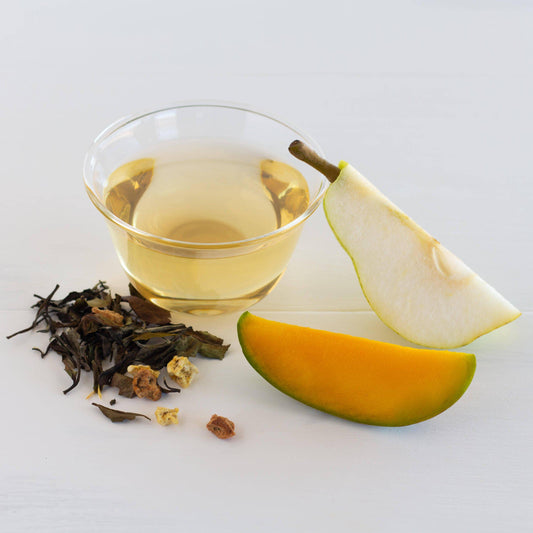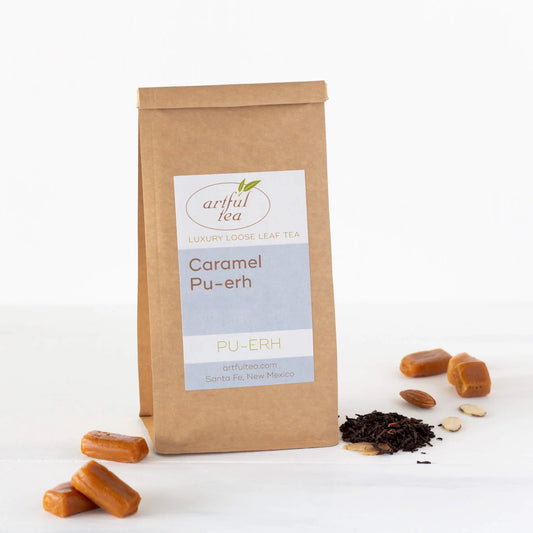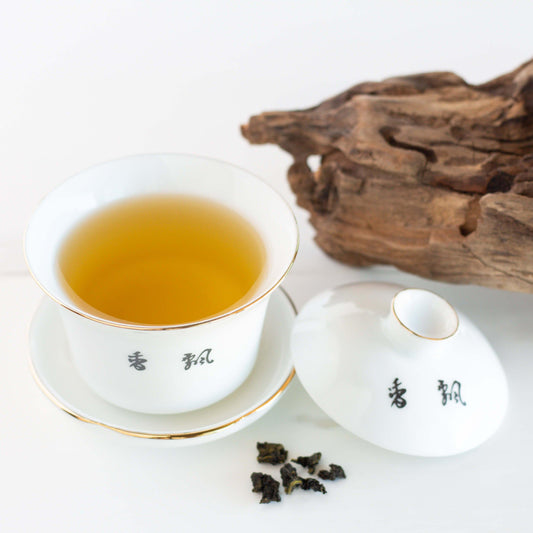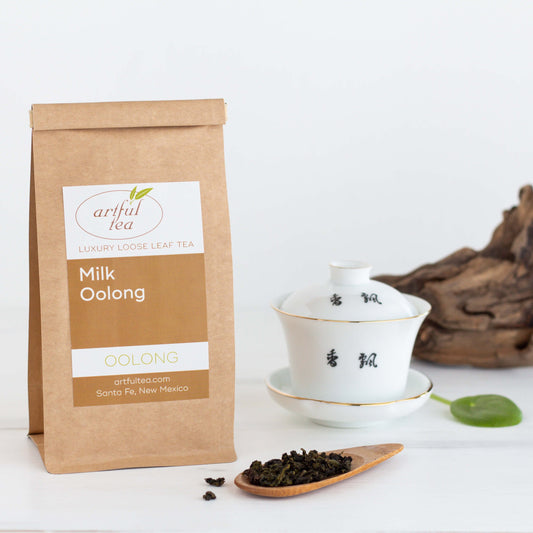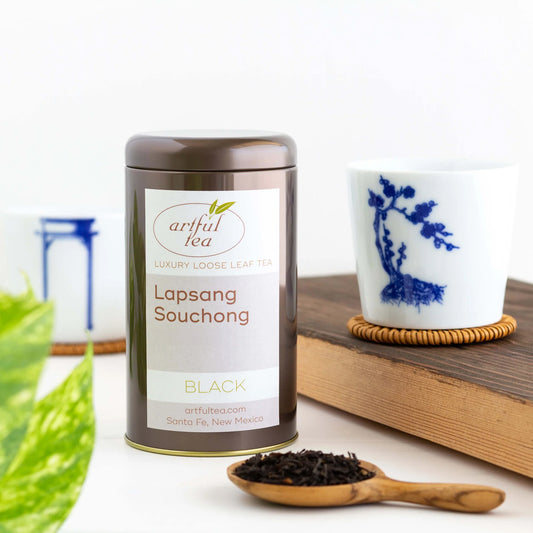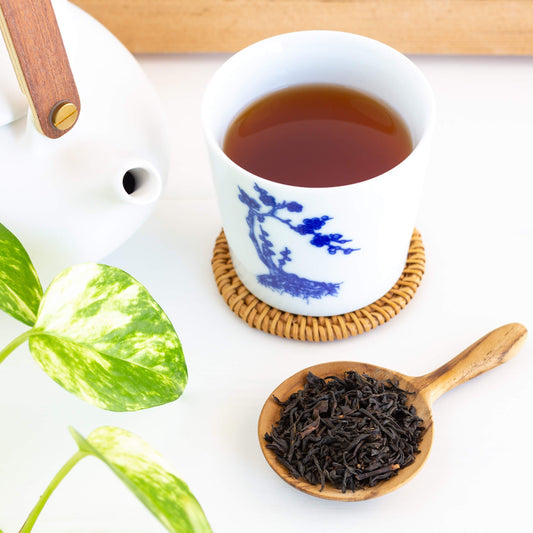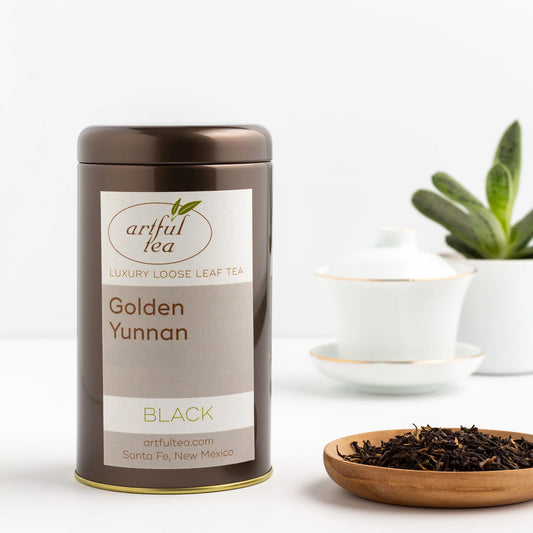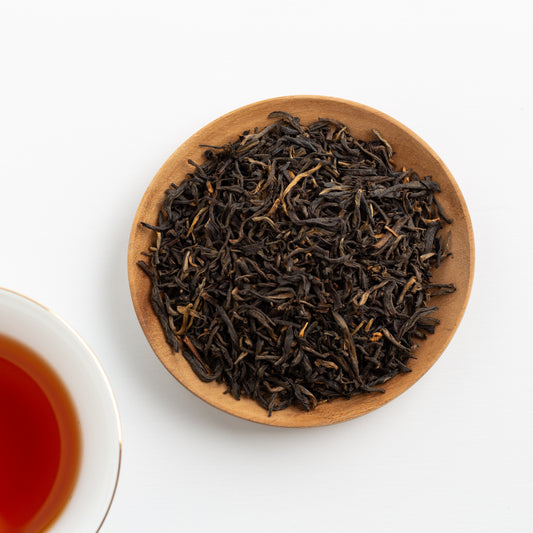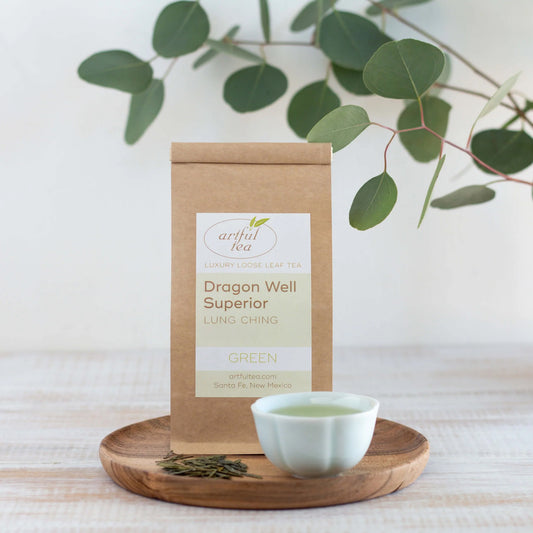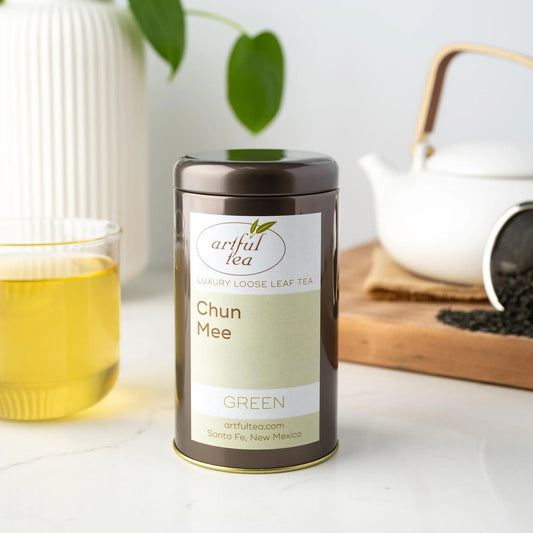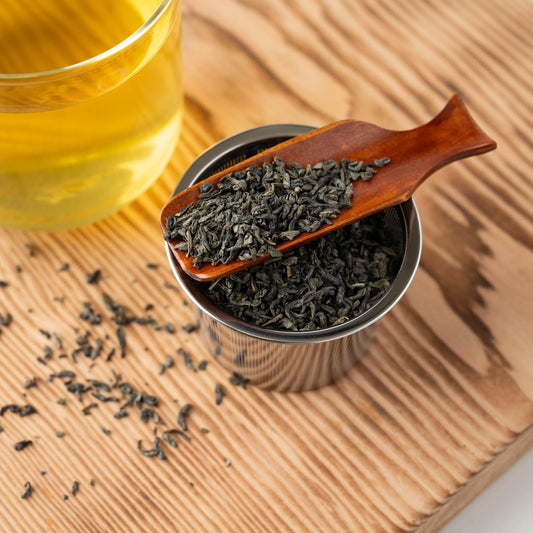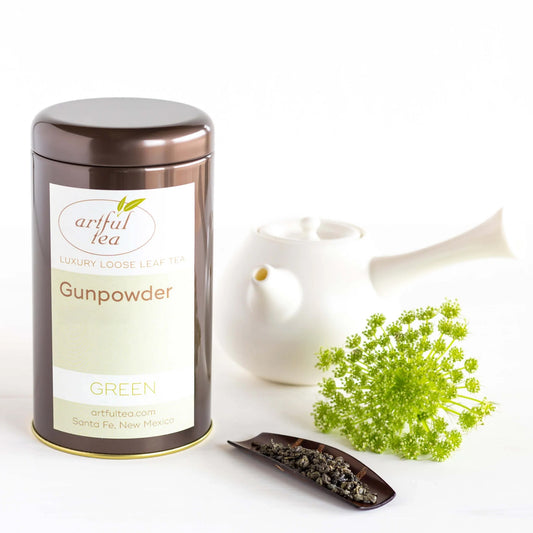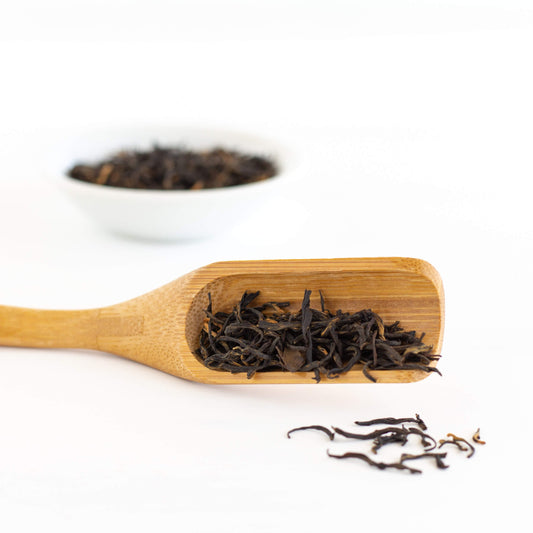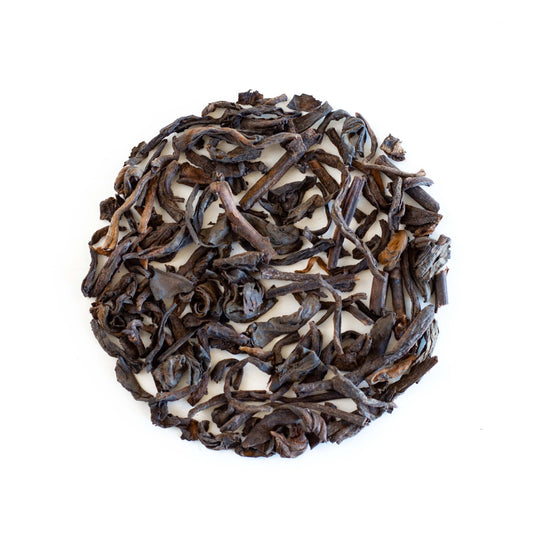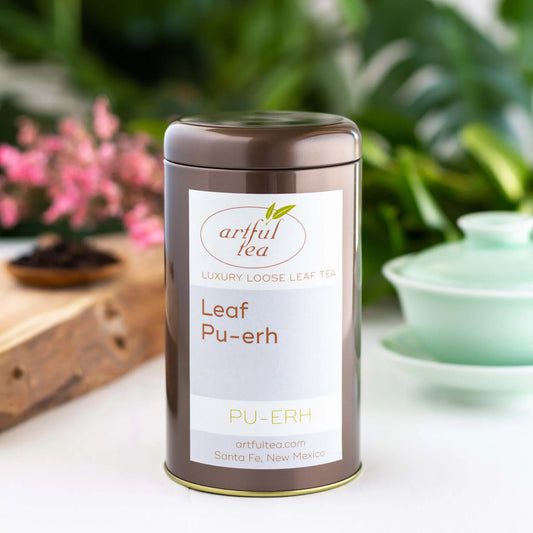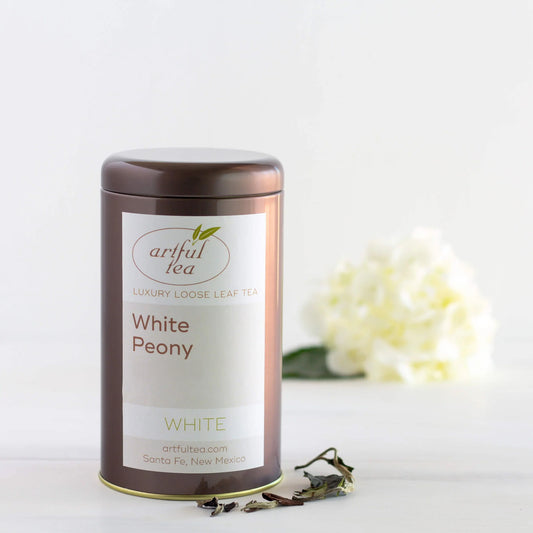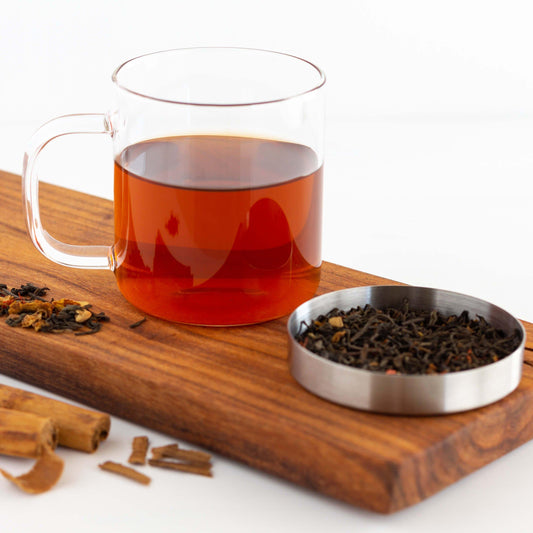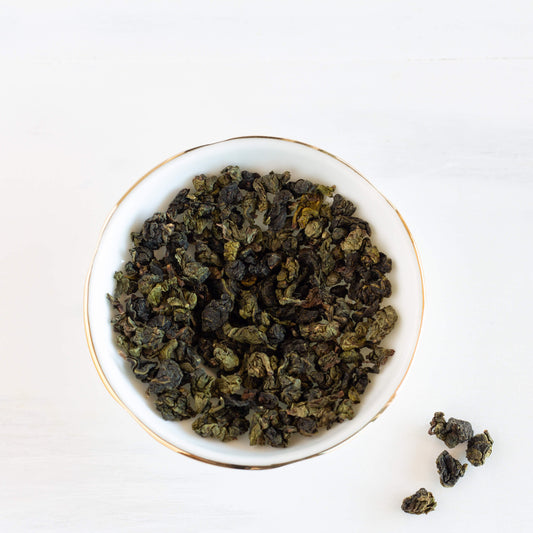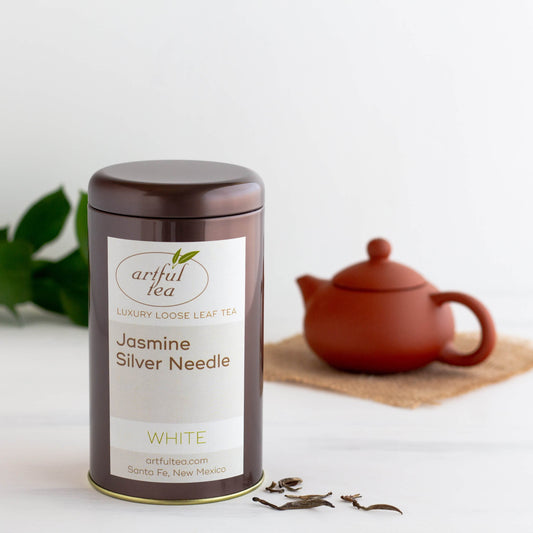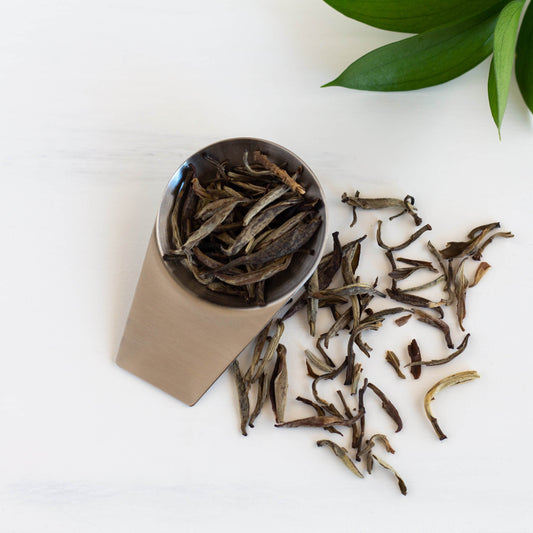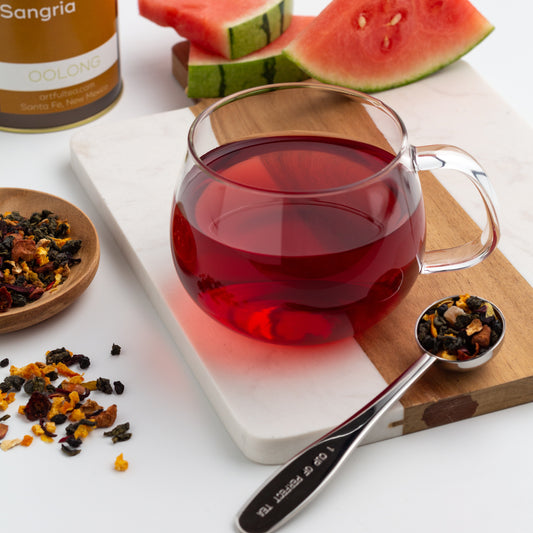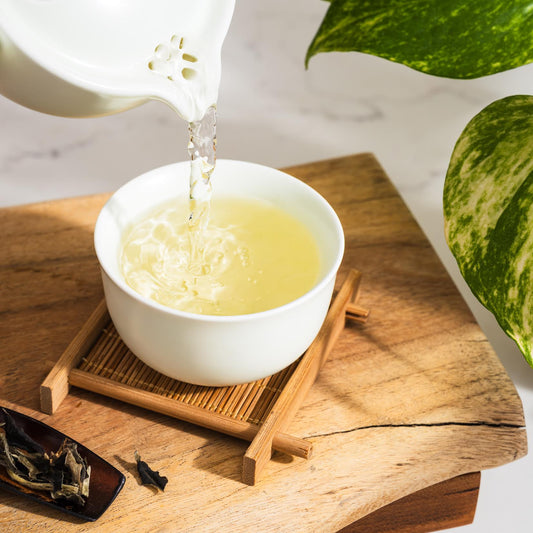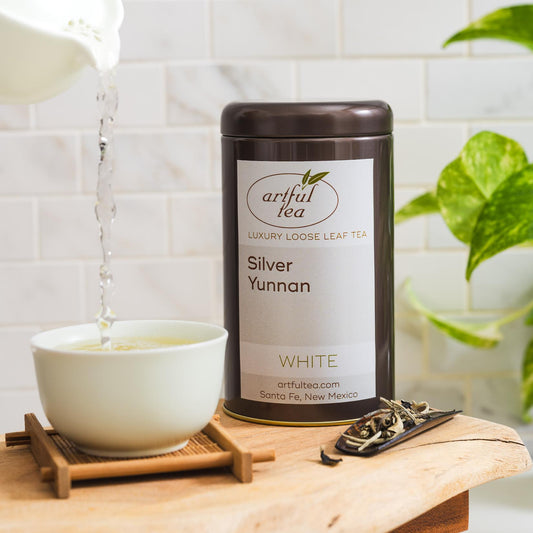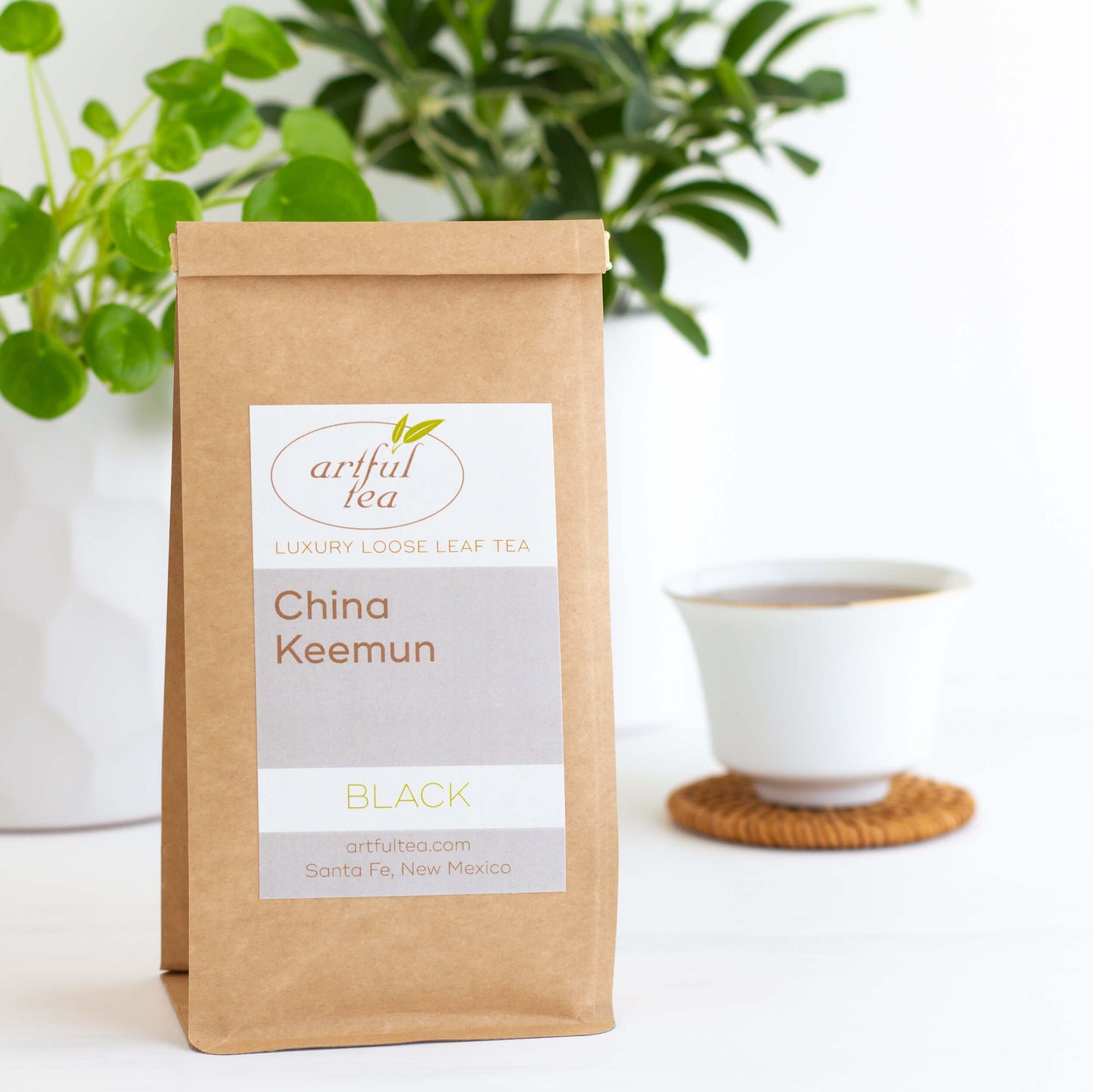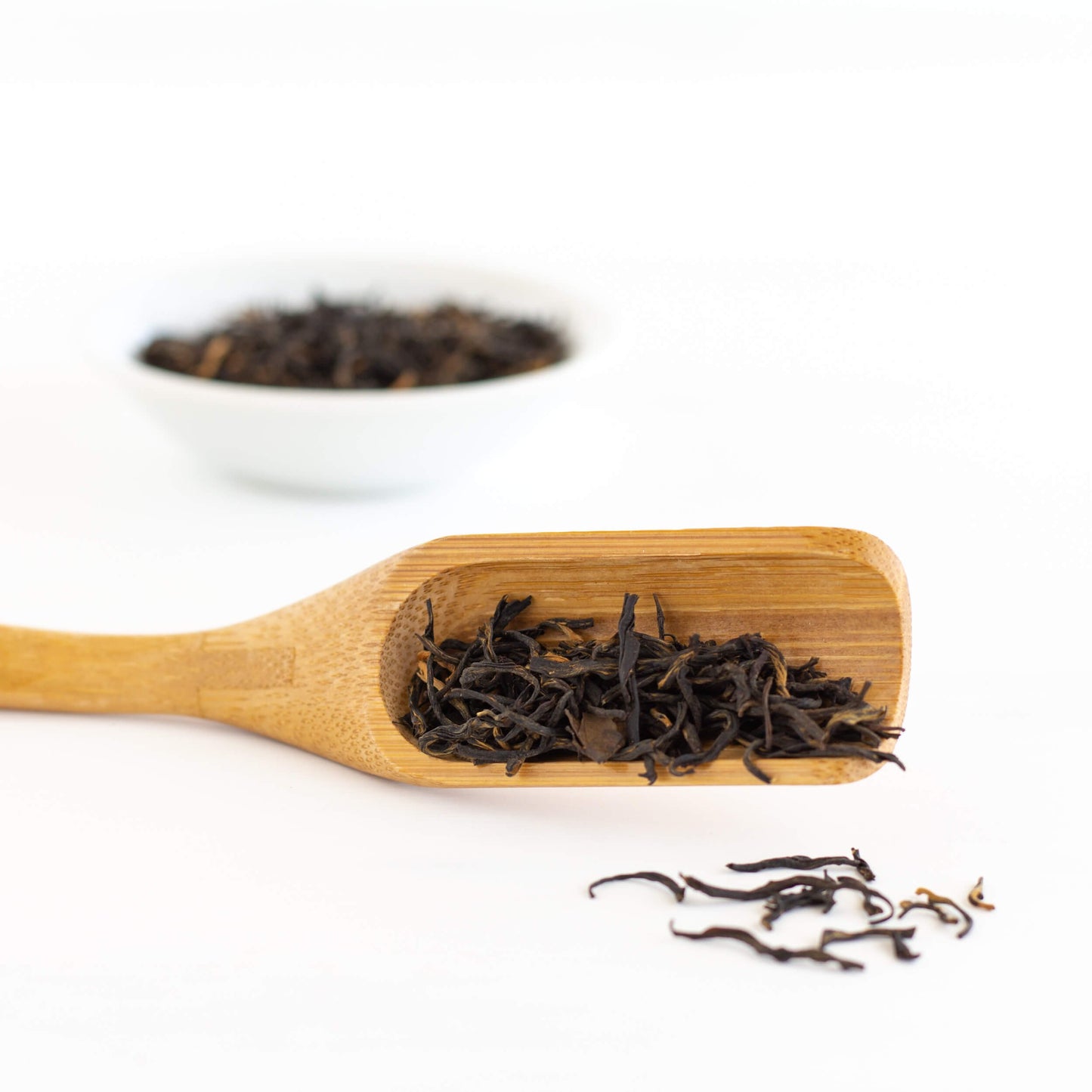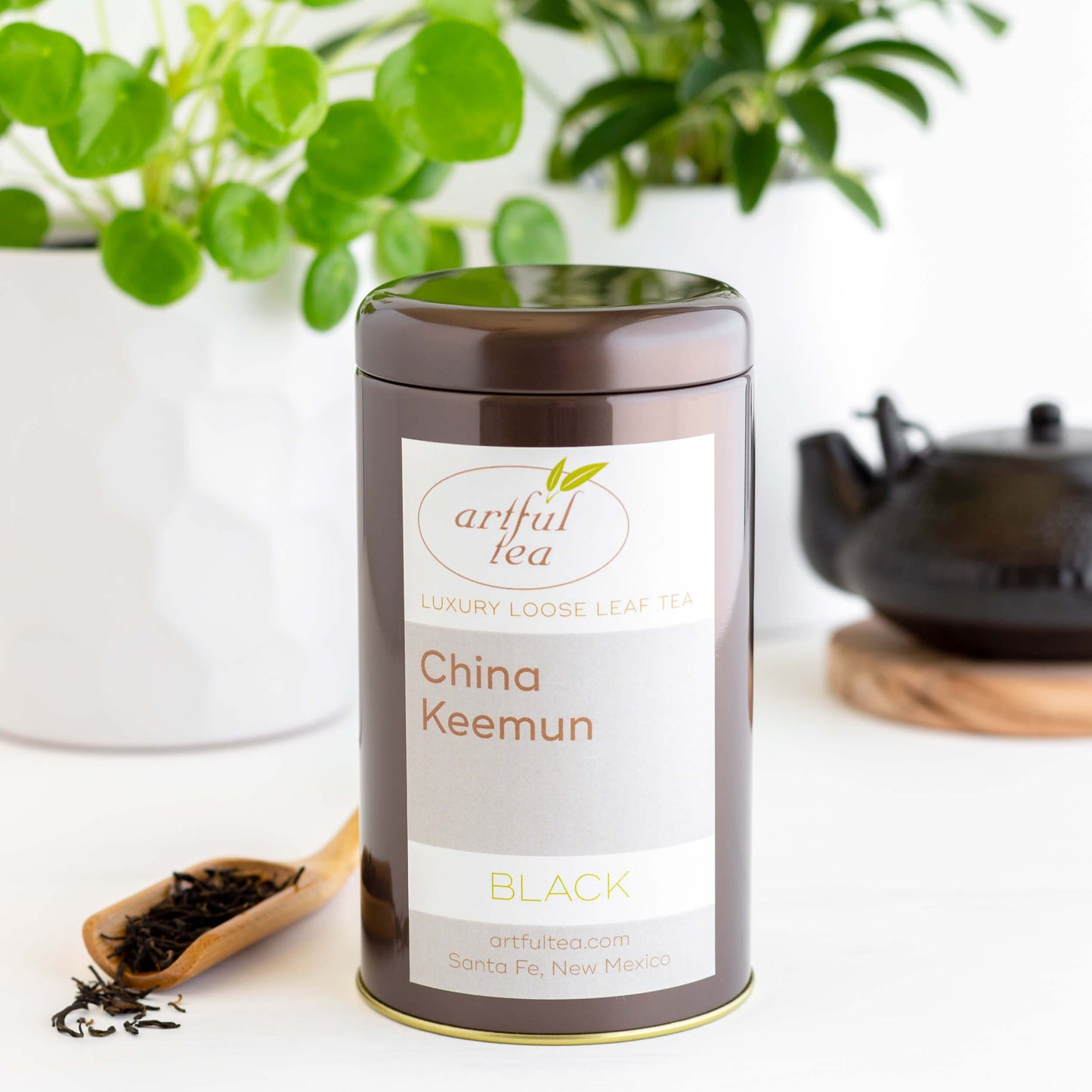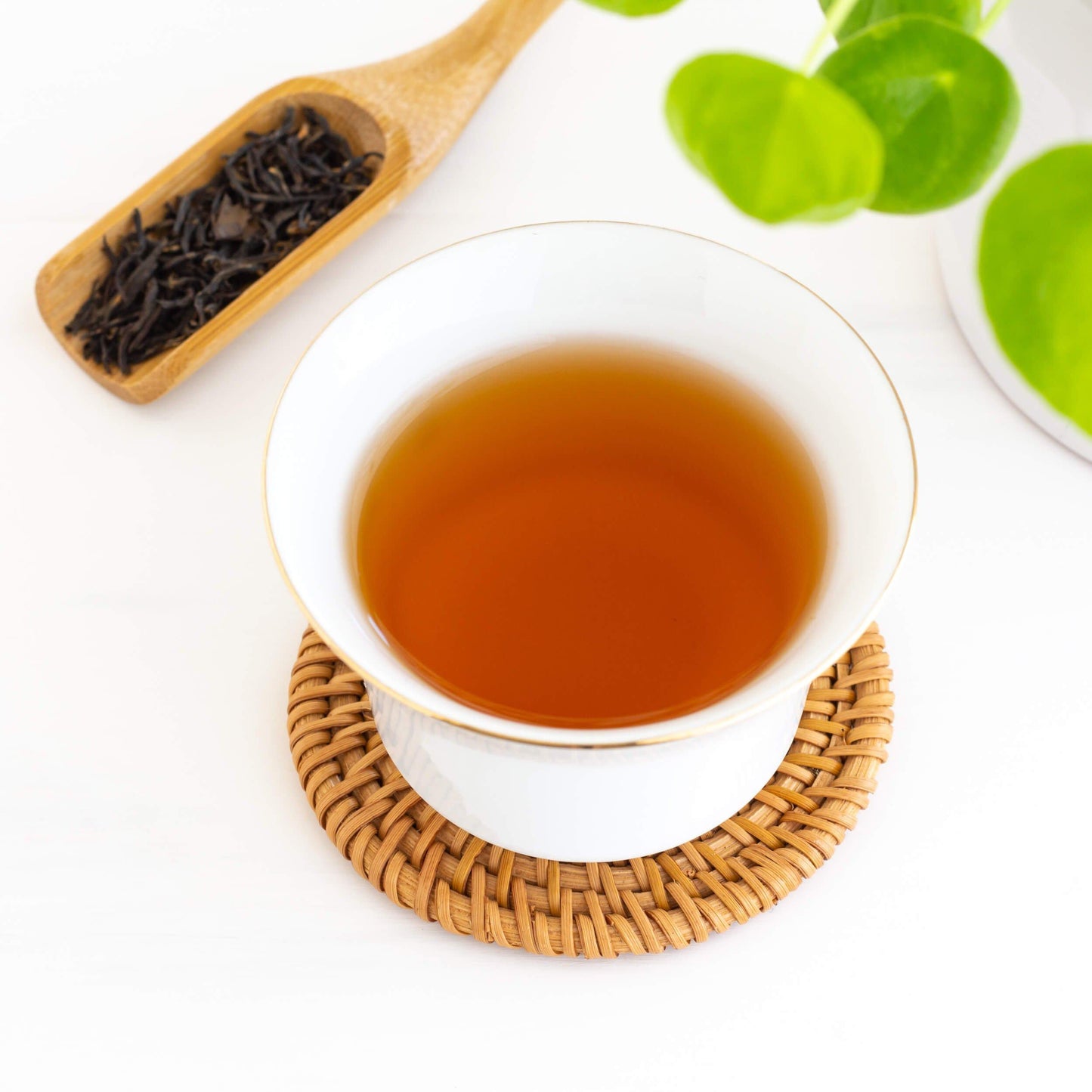The history of tea in China
Tea has a rich history in China stretching back centuries. While both myth and archeological research indicate that tea may have been consumed in China as far back as three thousand years ago, its status as a popular staple for both elites and common people arose over the course of hundreds of years. By the seventh century Tang dynasty, however, tea had become an integral part of Chinese life, and specialized cultivation methods, ceremonial preparations, and cultural significance had developed around tea.
Today, China is still one of the largest producers of tea in the world, producing black tea, green tea, white tea, oolong tea, pu-erh tea, and more.
Camellia sinensis var. sinensis
Camellia sinensis var. sinensis is the varietal of the tea plant most commonly grown in China. Native to China (sinensis is Latin for “from China”), this tea varietal is typically smaller and more delicate, with a slightly lower caffeine content. In contrast, teas made from the Indian assamica varietal are larger and more robust, with a slightly higher caffeine content.
Types of Chinese tea
Many different types of tea are produced in China, including black teas (called red tea in China), white tea, green tea, pu-erh tea, and more.
Chinese green tea
Chinese green teas are typically pan-fired soon after they are harvested, which halts oxidation and preserves the green color and the light, grassy taste of the tea.
Chun Mee Green Tea
Also known as “precious eyebrow” tea because of the shape of the leaf, this classic Chinese green tea has a distinctive plum-like flavor and buttery taste that is sweeter and mellower than many green teas.
Dragon Well Green Tea
Famously considered among the finest green teas in the world, this hand-crafted tea has a nutty flavor, earthy aroma and refreshing taste. Dragon Well is also sometimes referred to as Longjing tea.
Gunpowder Green Tea
From an estate west of Hangzhou, this classic gunpowder green tea has a full body and steeps into a dark green liquor. With its smooth, hearty flavor, it holds up well to repeated infusions. "Gunpowder" tea gets its name from the tightly rolled, bullet-like appearance of the leaves, not from its flavor!
Jasmine Yin Cloud Green Tea
Jasmine Yin Cloud is a Chinese green tea lightly scented with jasmine blossoms. The tea is carefully dried near freshly-picked jasmine flowers, giving the tea leaves a heady floral perfume. Jasmine Yin Cloud is delicious served hot, but also makes an excellent iced tea.
Chinese black tea
Chinese black teas tend to be slightly lighter and milder than other types of black tea, and are lovely when taken on their own with no need for milk or sugar. In China, these teas are called “red tea,” with “black tea” referring only to aged and fermented teas such as pu-erh. Chinese black teas are fully oxidized, which allows the leaves to turn black and imparts a rich, slightly malty character.
China Keemun Black Tea
Grown in China's Anhui Province, this handmade, limited production Keemun tea has a somewhat smoky flavor with toasty notes. It has a mellow character and steeps into a beautiful amber red.
Lapsang Souchong Black Tea
With its distinctive smoky characteristics, this Lapsang Souchong tea is deeply aromatic with a smooth, crisp character. Reminiscent of campfires or even expensive cigars, this classic, rich tea fills the mouth with an unexpectedly sweet pine flavor.
Golden Yunnan Black Tea
A bright, coppery, full-bodied tea from the famous Yunnan province of China. This tea brews into a soft, rounded cup with pleasant, slightly peppery notes. A wonderful example of a high-grade Chinese black tea with abundant golden tips.
Chinese white tea
Pleasant and subtle, brewed white tea actually has a pale yellow color. While not much is known about white tea’s origins, it has been enjoyed in China for hundreds of years. White tea was particularly prized in imperial China, and was enjoyed by poets, court officials, and even emperors!
Jasmine Silver Needle White Tea
Bai Hao Silver Needle tea leaves are scented with fresh jasmine blossoms to create a well-balanced tea with the tantalizing floral taste of jasmine. This superb quality tea offers one of the most sublime tea-drinking experiences available!
White Peony White Tea
Consisting of both buds and leaves that are simply air-dried after they are harvested, this subtle white tea is also known as Pai Mu Dan, and has a floral aroma and smooth velvety taste. Very high in antioxidants and very low in caffeine, White Peony is a superior quality tea from the Fujian Province of China.
Mango Pear White Tea
Mango Pear starts with a base of White Peony white tea, and adds mango cubes, apple pieces, and pear for a light, refreshingly fruity white tea. Mango Pear is low in caffeine and high in antioxidants, making it the perfect tea for an afternoon pick-me-up when you’re in need of something sweet. This tea is also excellent iced!
Chinese oolong tea
China and Taiwan are the best known producing countries in the world today. The moniker “oolong” is an English transliteration of the Chinese “wulong,” meaning black dragon. In China, oolong teas are sometimes also referred to as dark green teas. Chinese tea production reaches back centuries, in particular among the geographic regions of Fujian and Guangdong. Within Fuijan, tea production is clustered around the areas of the Wuyi Mountains and Anxi County. Oolong teas are closely associated with Gongfu Cha, a traditional Chinese tea ceremony where tea leaves undergo many successive infusions in order to draw out different nuances in flavor.
Fine Ti Kuan Yin Oolong
Fine Ti Kuan Yin is a highly prized Chinese oolong with a light, floral taste reminiscent of orchids. This tea brews up a smooth, fragrant golden-yellow liquor with a floral character and a hint of sweetness. The leaves unfurl as they steep, and can be infused many times over.
Milk Oolong
Prized for its milky scent and taste, this Milk Oolong is produced by hand in the Fujian Province of China, within the Prefecture of Quanzhou. These hand-rolled leaves are a rich olive-green color that brews into a golden green liquor. This relatively new cultivar of tea has the distinctive, mellow buttery flavor sought by those who enjoy specialty oolongs.
Ginseng Oolong
Our ginseng oolong tea comes in the classic form of small rolled balls of tea leaves, which are coated with ginseng, and blended with licorice root. This enjoyable oolong brews into a naturally floral cup, similar to a Ti Kuan Yin oolong, but with a hint of spice. This blend is well-known in China for its many health benefits, and is sometimes called “King’s Tea” or “Emperor Oolong.”
Sandia Sangria Oolong
Our Sandia Sangria Oolong is a fruity sangria-inspired blend with hints of watermelon, lemon, and orange. This tea is named after New Mexico's Sandia mountains—sandia means "watermelon" in Spanish, which is what these mountains are said to look like when they glow red at sunset. Sandia Sangria is delicious hot and also makes an excellent iced tea!
Chinese pu-erh tea
Pu-erh is a type of heicha, or Chinese black tea. In China, what westerners typically refer to as black tea is called red tea, with black tea referring only to teas such as pu-erh that are fermented and aged after having undergone the oxidation process. The tea is named after the city of Pu-erh in Yunnan province, a famed trading post for heicha in imperial China. Bordering Laos, Myanmar, and Vietnam in the southwestern part of China, Yunnan province had extensive trade ties to the west and throughout Asia during imperial times. Today, only tea originating from Yunnan province is legally allowed to be sold as pu-erh, and much of the tea is still processed in the city of Pu-erh itself!
Leaf Pu-erh
An earthy, rich flavor distinguishes this Chinese pu-erh tea from regular black teas. Sometimes sold in bricks or cakes, our Pu-erh tea is leaf style, making it convenient and easy to use without losing any of the robust flavor you expect from Pu-erh. Aged teas are thought to offer many health benefits as well as lots of antioxidants and moderate caffeine.
Caramel Pu-erh
This richly flavored pu-erh combines the sweet decadence of caramel with the earthy, mustiness of an aged pu-erh to create something akin to dessert in a teacup. Smooth with a naturally sweet finish, this tea is warming and thick – perfect for an afternoon pick-me-up. Excellent with a splash of milk.
Cinnamon Pu-erh
Cinnamon, ginger, and orange peel combine perfectly with pu-erh to create a purifying blend that also warms and restores you. This balanced blend not only has a delicious, rich flavor, but also offers benefits from ingredients traditionally thought to aid digestion and support health.
Our Chinese Tea Collection >>>
The Chinese tea ceremony
Gong Fu Cha is a tea ceremony practiced in China and in other Asian countries, and is designed to maximize the flavor and aesthetic experience of drinking a cup of tea over multiple infusions. Gong Fu Cha is translated as “making tea with great skill” - a practice that allows you to focus on the simple process of preparing tea and elevate it to an art.
To brew tea using the Gong Fu Cha method, you’ll need a small-sized teapot. These pots may be made out of yixing clay, which develops a patina over time, or they may be made out of porcelain or ceramic. They often come with two or more small cups to pour your tea into. Depending on the size of your pot and the size of your tea leaves, you should use somewhere between half a teaspoon and two teaspoons of tea leaves. Heat your water and infuse your tea leaves for only a few seconds, then pour your tea into the small cups. Repeat this process, infusing the tea leaves for 10-15 seconds at a time before pouring the tea.
By preparing tea using this method, you can get multiple infusions from your tea. Gong Fu Cha is a meditative process that allows you to savor the subtle differences in each successive infusion of tea.
FAQs
Does Chinese black tea have caffeine?
Yes, Chinese black tea has caffeine. However, Chinese black teas tend to have a slightly lower caffeine content than Indian black teas, since they’re made with a different tea varietal.
Is Chinese green tea good for you?
Like other types of green tea, Chinese green tea is full of health benefits. These include boosting energy, reducing stress, and improving cognitive function. Green tea is also high in antioxidants and catechins like EGCG.
What is the best Chinese tea?
The best Chinese tea for you depends on your own particular preferences. Some of the most famous Chinese teas include Gunpowder green tea and China Keemun black tea.
